An annotated bibliography is a unique form of bibliography providing a short summary or analysis of sources. While creating an annotated bibliography shouldn’t be stressful, many students might find the process hard. Keep it simple by using this step-by-step annotated bibliography guide for perfect annotations in any style.
Table of Contents
What Is an Annotated Bibliography?
So, the big question in everyone’s minds is, what is an annotated bibliography? An annotated bibliography is a list of citations followed by a brief summary or analysis of your sources, aka annotations. The annotation gives information about the relevance and quality of the sources you cited through a 150-250 word description or interpretation of the source.
Why Write Annotations?
One of the main questions students have is what the purpose of an annotation is. Surprise, it’s not just for your teacher. Annotations help you, too. Many times, you create your reference list as you begin researching your topic. Since you summarize the source in an annotated bibliography, you start to delve into the topic more critically to collect the information for your annotations. This helps you better understand the subject and sources to help you create your thesis.
How to Write an Annotated Bibliography Step-by-Step
The creation of an annotated bibliography is a three-step process. It starts with evaluating sources to find the ones that will genuinely make your paper shine. You’ll then begin writing your annotation for each different source. The final step is to choose your citation style. Now that you know the three-step process, let’s check out each step in turn.
Step 1: Analysis of Sources
When it comes to an annotated bibliography, you have to critically look at your topic’s sources and research. Therefore, you need to look at the author’s qualifications and credentials, along with the date of the study itself. Since new thoughts and literary movements are happening all the time, you want to make sure the analysis and opinions you use are relevant to your topic and current times.
In addition to the author, make sure the publisher or journal where you found the research is distinguished and reviewed by professionals in the field. Research by an unknown or unreputable journal will not make a good source for your arguments or analysis. Other areas you’ll want to be aware of include:
- The intended audience
- Errors
- Omissions of facts
- Bias
- Opinions presented as truths
Critically analyzing all these different areas helps you evaluate if a source is credible, helpful to your project or research, and works to answer your thesis.
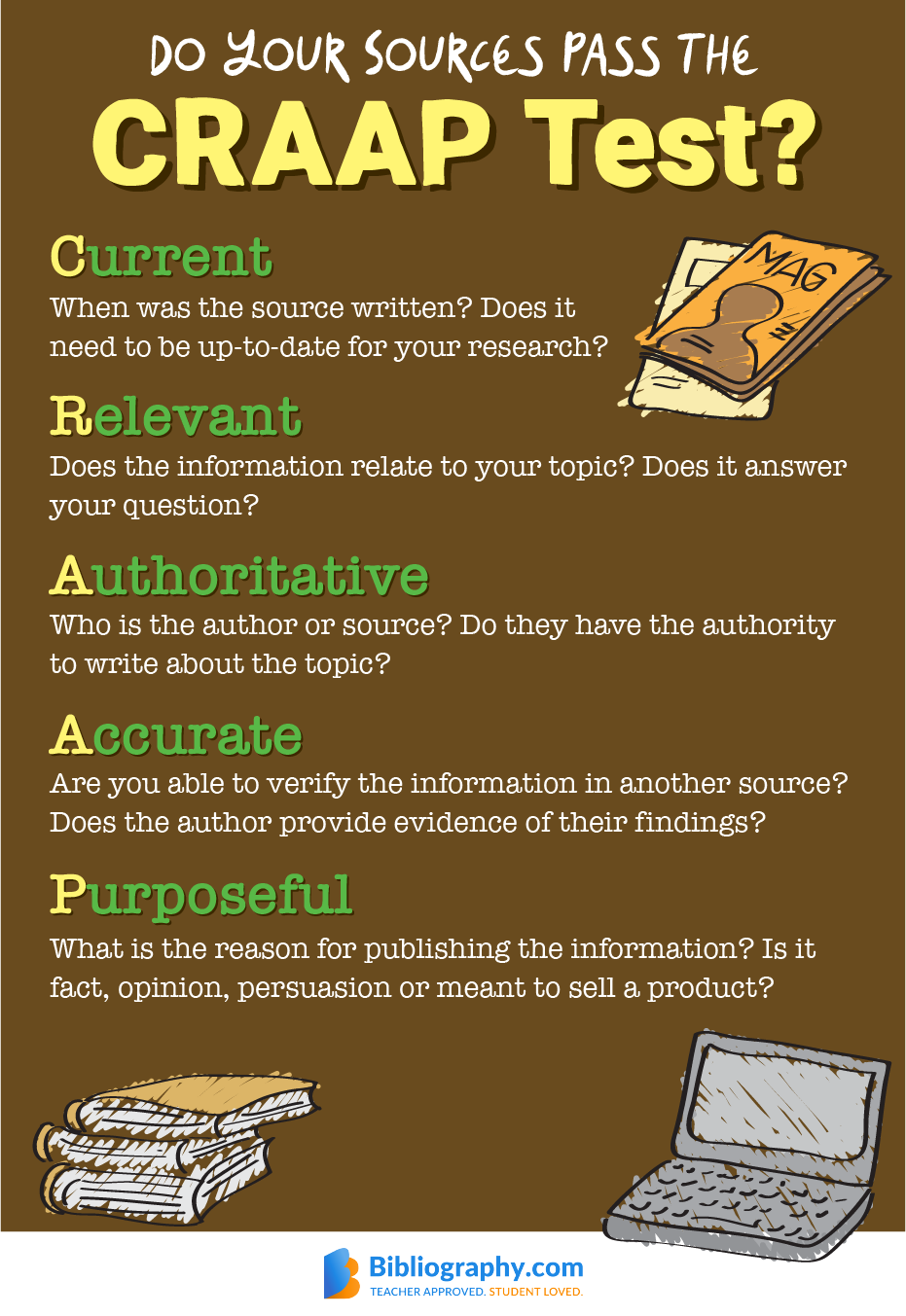
Step 2: Create Your Annotations
Now that you’ve used your critical academic eye to dive deep into your sources, it’s time to create annotations for them. Annotations aren’t one size fits all. Therefore, there are different ways you can create them, depending on your intent. You might choose to use descriptive, summary, or evaluation in your annotations or a combination of all three. Just remember to always include what your instructor asks for.
Indicative/Descriptive Annotations
Descriptive or indicative annotations do just what they say. They describe the source. Indicative annotations give you a quick summary of the source and argument and describe the main points and even chapters within the source. See how this indicative annotation example in MLA works.
Zachs, Mitch. The Little Book of Stock Market Profits. John Wiley & Sons, 2011.
This book covers a wide variety of strategies used in the stock market throughout the years to improve performance. Insightful chapters within the text include “Understanding the Markets,” “Using Profits to Achieve Your Elusive Goals,” and “The Challenge of Investing.”
Informative/Summary Annotations
Summary annotations simply provide a summary of your different sources. Within them, you describe the main arguments or points along with the various topics covered. This is where you show why this source was essential and made it to your list. See an example of informative annotations at play.
Doerr, John. Measure What Matters: How Google, Bono, and the Gates Foundation Rock the World With OKRs. Penguin. 2018.
This book is written by Doerr, who is the chair of a venture capitalist group. The book describes how a business organization can use OKRs to drive a company’s focus through agility, which leads to explosive growth. These are first-person, behind-the-scenes case studies narrated by leaders like Bill Gates. This book helps guide understanding of the business management strategies that drive the success of large companies.
Evaluation Annotations
Your annotations might stop at summarizing, or you could take it a step further by evaluating the source. To do this, you want to compare and contrast it. Why did this one make the cut? Explain the overarching goal of the source and why it fits into your paper so well. Additionally, you want to look at the reliability of the information and any bias it might have. Dig deep into your source like in this example.
Wilson, John Philip. When the Texans Come: Missing Records from the Civil War in the Southwest. UNM Press, 2001.
Through primary resources like original letters, song lyrics, and casualty lists, the author, a historian-archeologist, provides a fresh narrative of the Civil War. The author dissects primary sources like witness testimony and original newspaper accounts to clearly understand the battles fought within the Civil War. It not only takes you through the major battles but the minor ones happening in the west to provide you a clear picture of the war. While it’s interesting to see the war through fresh eyes, it lacks in some areas due to its overarching look at the entirety of the war.
Combination Annotations
Annotations don’t have to just follow one specific format. You can combine all three types of annotations into your annotated bibliography. For example, you might spend a few lines describing and summarizing the work and end with an evaluation.
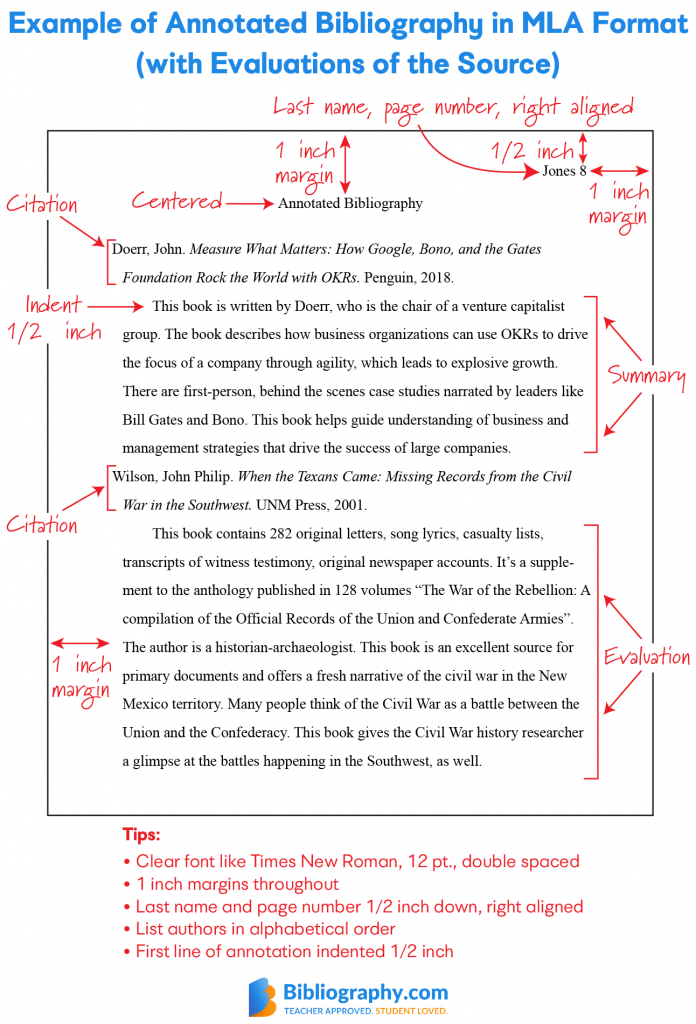
Writing Style for Annotations
Just like there are different types of annotations you can create, you can also use different writing styles. Annotations typically follow three specific formats depending on how long they are.
- Phrases – Short phrases providing the information in a quick, concise manner.
- Sentences – Write out complete sentences with proper punctuation and grammar. Be sure to keep sentences short and concise.
- Paragraphs – Longer annotations also break the information out into different paragraphs. This can be very effective for combination annotations.
Step 3: Annotated Bibliography Format
All annotated bibliographies have a title, annotation, and citation. While the annotation is the same for all, the way you create your title and citation varies based on your style. The three main bibliography styles used include MLA, APA, and Chicago.
Annotated Bibliography Examples
Get examples of an annotated bibliography in each different style. Find a quick overview of when to use APA, MLA, and Chicago styles.
APA Example
An APA annotated bibliography is used for science and technical papers. It includes an APA citation and APA formatting for headers and title.
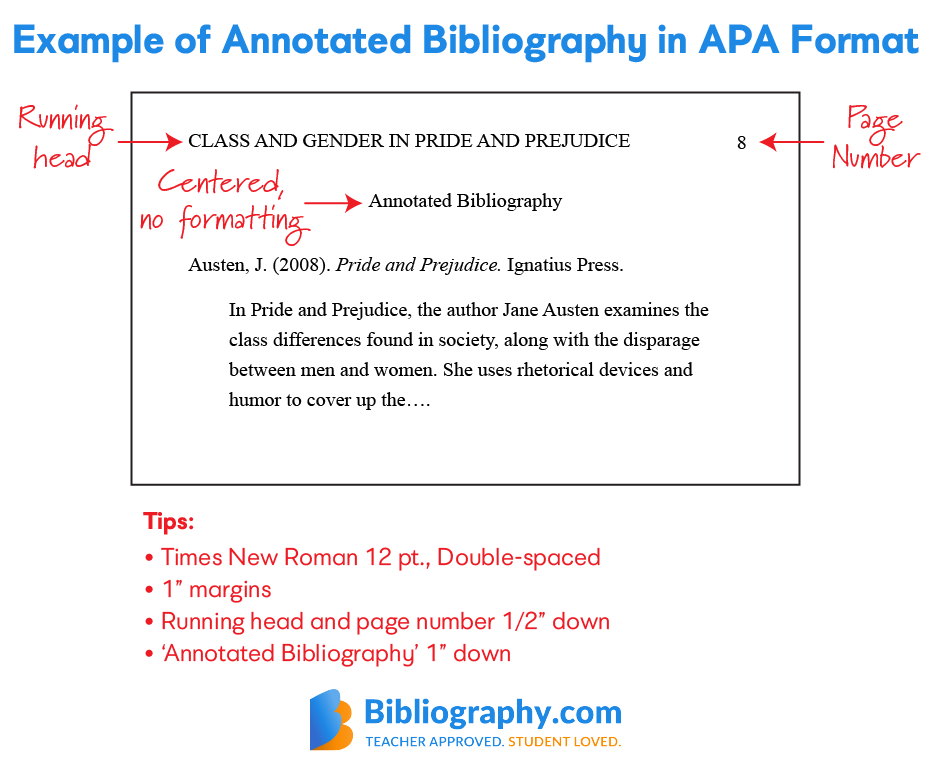
MLA Example
An MLA annotated bibliography is the go-to style of high school and college students for language arts and humanities papers. This style uses MLA style citations and formatting like the surname and page number header.

Chicago Example
Chicago style annotated bibliographies are a catch-all type of style with author-date and notes-bibliography citations. The citation used in Chicago style can vary by style, but the annotation remains the same.

How to Use an Annotated Bibliography Generator
When it comes to creating your annotated bibliography, you can use the annotated bibliography generator at Bibliography.com to make things easier. Get a step-by-step overview on how to create an annotated bibliography using Bibliography.com.
-
- Open the citation generator and click “Start Your Bibliography.”

- Select the pencil icon to modify your title.
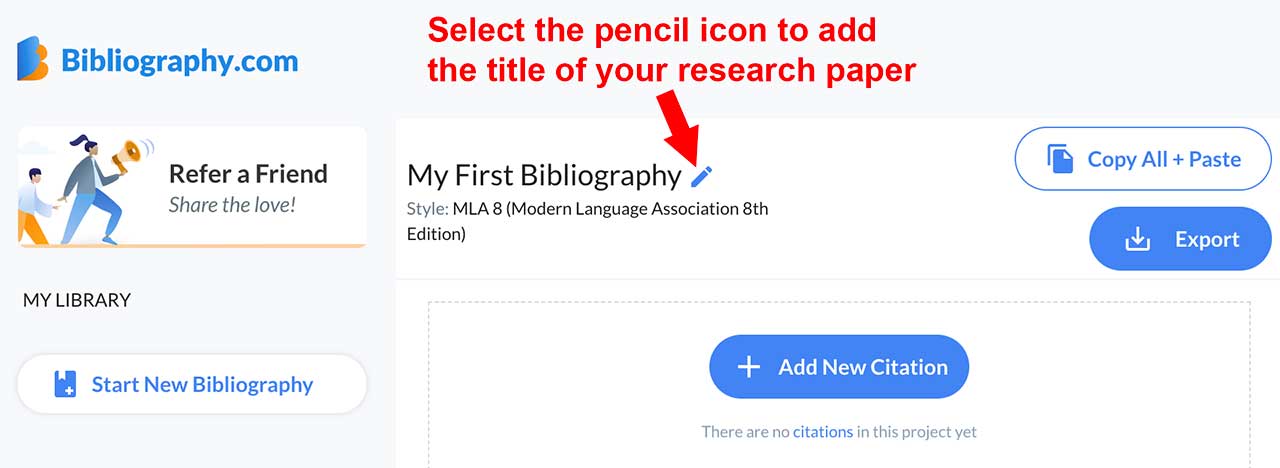
- Edit your title and choose your style.

- Click “Add New Citation.”
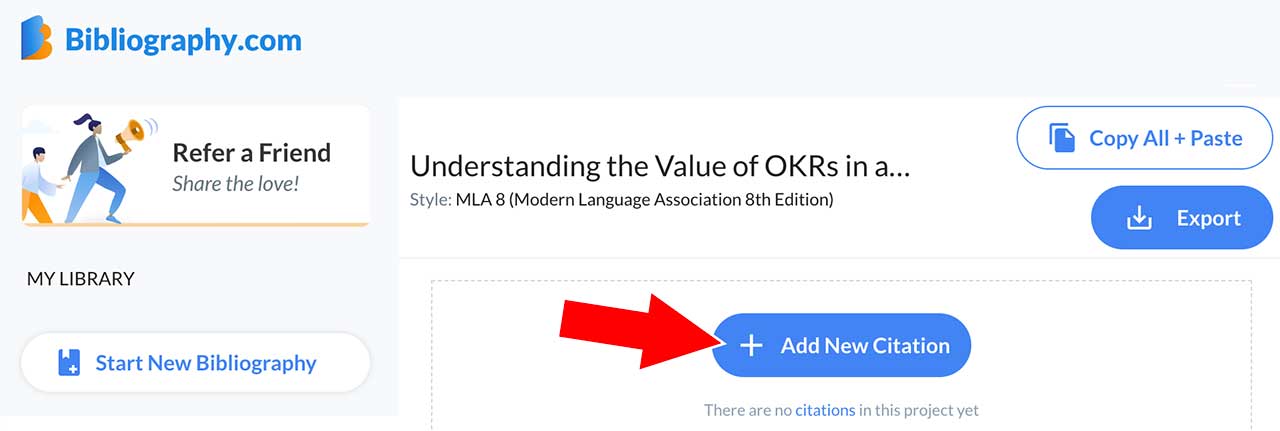
- Search for your source in the pop-up box by typing in your website, book title, journal title, etc.
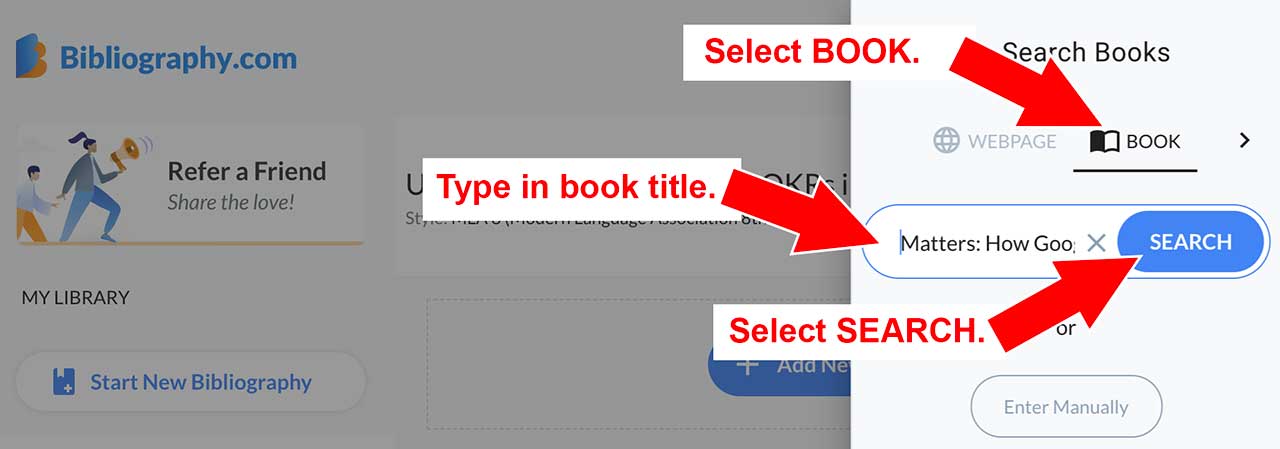
- Select the source that matches the title you are looking for.
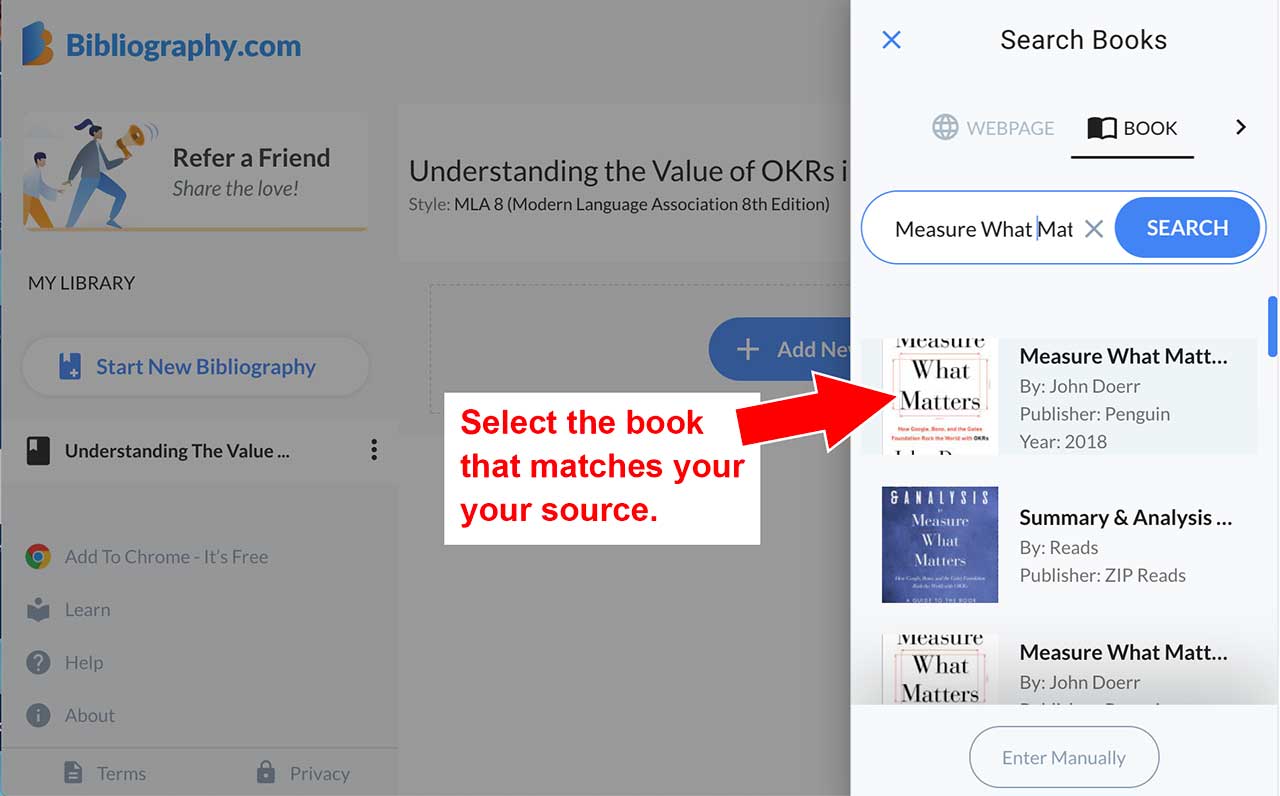
- Modify your source as needed and scroll down to the “Annotation” box.

- Add your annotation into the box and click “Cite.”
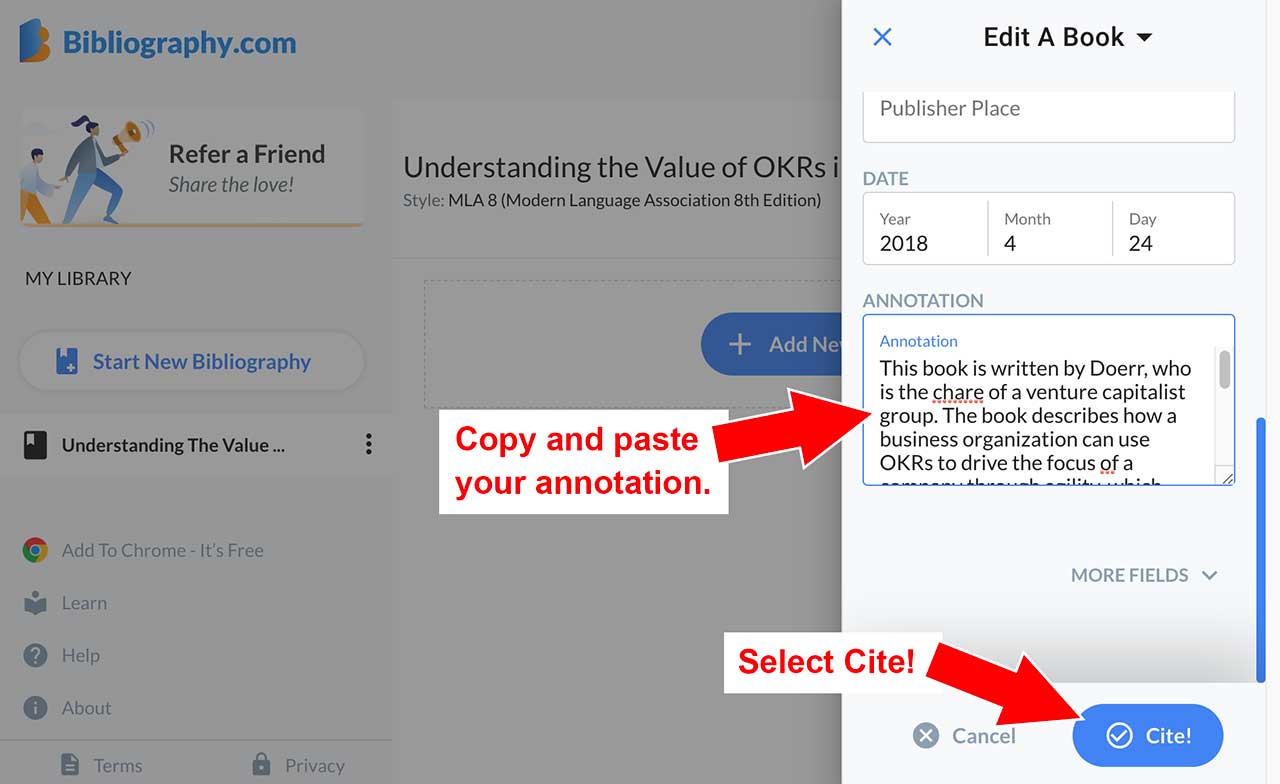
- Once your annotations are done, select “Copy All + Paste” or “Export.”
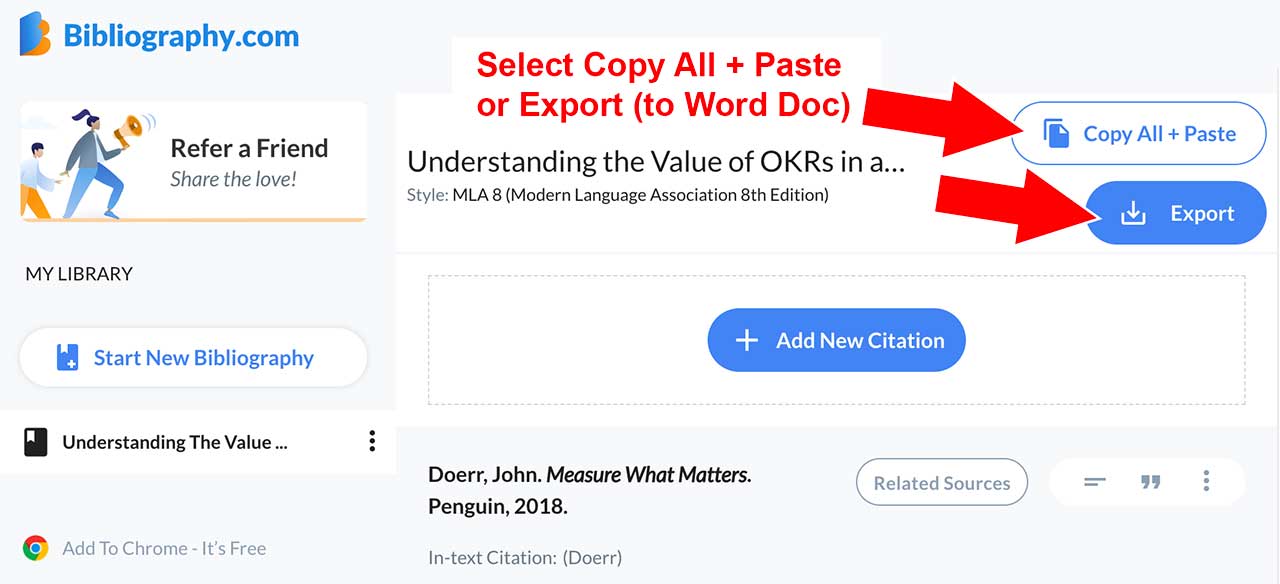
- Paste into a Microsoft Word document.
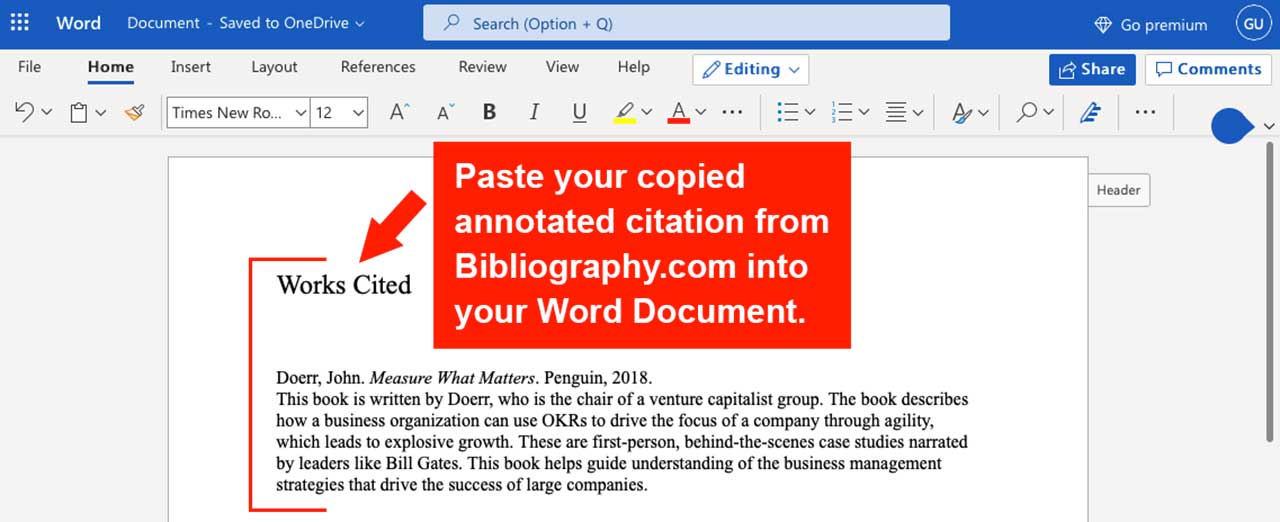
- Rename the heading “Annotated Bibliography” regardless of the format you are using, and you are done!

- Open the citation generator and click “Start Your Bibliography.”
Creating your annotated bibliography through Bibliography.com’s annotation generator is as simple as that.
Difference Between Abstract, Annotation, and Literature Review
The difference between an abstract, literature review, and annotated bibliography can get a bit fuzzy, especially if you are new to the academic writing game. You know an annotation is a brief synopsis of your source. Explore how that differs from an abstract and a literature review.
What Is a Literature Review?
Like an annotated bibliography, literature reviews can be full papers, in their own right, or they can be incorporated into a school paper. Their purpose is to review and tie together previously published research to bolster a writer’s own thesis. The literature review also suggests ways to move the research forward or identifies gaps in the existing literature. Preparing a literature review helps students learn how to find and critically evaluate sources.
Purpose of an Abstract
The difference between an abstract and an annotated bibliography is abstracts are included as part of research papers. Their purpose is to inform an interested researcher about the topic, problem, methodology, findings, and conclusion of the research. This abstract helps students understand whether this source is a good one for their own school paper.
An abstract is written as a summary rather than to serve an evaluative purpose. No added material, such as explanations or further reading, are included in abstracts—usually, an abstract runs between 150 to 250 words. If you’re using APA style to format your research paper, you may need to include an abstract on the page following the title page.
Now that you know the difference between an abstract, annotated bibliography, and literature review, you have all the skills needed to create a perfect annotated bibliography.

Creating an Annotated Bibliography
Creating an annotated bibliography takes more work, but it can make you a better researcher. Just follow the steps for creating annotations and citations per your professor, and you’re ready for that A. Interested in learning more about research papers? Why not check out how to insert citations in Word quickly.
FAQ Annotated Bibliography Writing Guide With Examples
How do you write an annotated bibliography?
To write an annotated bibliography, you need to evaluate your source then write a summary, evaluation, or reflection of the source. Once your annotation is complete, you will create a citation for the source using the rules for APA, MLA, or Chicago style.
What are the 3 parts of an annotated bibliography?
The three different parts of an annotated bibliography include the title, annotation, and citation. The title and citation format will vary based on the style you use. The annotation can include a summary, evaluation, or reflection.
How long is an annotated bibliography?
The length of an annotated bibliography can vary from about 150-250 words. However, some annotations can be shorter for the Chicago style.
What should an annotated bibliography look like?
The look of an annotated bibliography includes a title, citations, and annotation. Each source has a citation and annotation throughout the entire annotated bibliography to provide an overview of the relevance of your sources for your teacher.
What are 3 types of annotations?
The 3 types of annotation include descriptive, summary, and evaluation. You can choose to use one of these or all three in your annotations for your bibliography.
